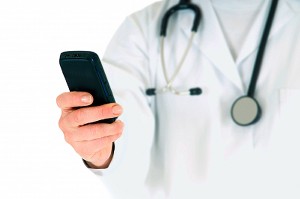Physician Data Analytics and Mobile Patient Monitoring
Last month, I discussed population health and how that would relate to your Electronic Health Records (EHR) and data analytics. What about remote monitoring of your patients? Can this really fit into physician data analytics?
Obviously, there are many patient data elements you can measure and track while the patient is in your office. What happens when they leave? How do you know the patient is following the instructions and/or orders you provided at the time of the visit? The only easy way to track and monitor your patients outside of the office would be through some type of inexpensive (or free) mobile app.

For example, if your patient needs to change their diet and exercise habits, there is a smart phone app called “MyFitnessPal” for fitness and food tracking. This app can synch data from other exercise trackers, like Fitbit, Withings, Jawbone, Endomondo and RunKeeper. This app also partners with Cigna’s health coaching program (Source: MobiHealthNews, MyFitnessPal in CHaT Trends, Fall 2013). By just uploading two data elements into your data analytics program, such as daily steps walked and calories eaten, you could begin to track your most critical patients between visits. This obviously requires cooperation of the patient, but by applying use of some easy phone-based apps, the patient could be more encouraged to follow your “health instructions” as they are getting daily feedback on their success.
Another app called “Human” has a goal to get users moving for up to 30 minutes a day, thus reducing an obese person’s chance of getting type 2 diabetes by 50 percent! This particular app runs in the background and automatically detects whether a user is walking, running, cycling or driving (Source: Fast Company, The Verge in CHaT Trends, Fall 2013).
For patients finding medical information, physicians are still the most trusted source. This trust could be strengthened even more by taking an active role in “prescribing mobile apps” that can help patients maintain chronic conditions. By pre-selecting the mobile app and configuring your EHR and data analytics system to import data directly from the app, you have just stepped into a new world of “continuous patient care.” With this additional data, you will be able to show better outcomes and then negotiate better contracts with your payers. By effectively using mobile apps to improve outcomes of your patients, you have created a win-win-win – for the patient, physician and payer!

